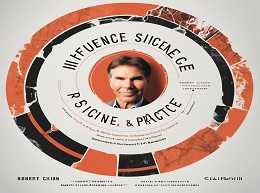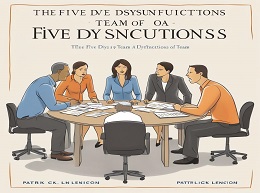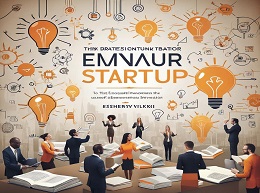Beyond the Idea: How to Execute Innovation in Any Organization

Beyond the Idea: Mastering Innovation Execution in Organizations
In "Beyond the Idea: How to Execute Innovation in Any Organization," authors Vijay Govindarajan and Chris Trimble delve into the often-overlooked aspect of innovation: execution. While many organizations excel in generating ideas, the challenge lies in turning those ideas into tangible outcomes. This review explores the key themes, strategies, and practical insights presented in the book, supported by real-world examples that demonstrate how these concepts can be effectively applied.
From Ideas to Action
Govindarajan and Trimble argue that the true challenge of innovation lies not in the generation of ideas, but in their execution. The book begins by highlighting the gap that exists between having a groundbreaking idea and successfully implementing it within an organization. This gap, often termed the "execution gap," is where many innovation efforts falter.
Example: Xerox PARC
Xerox PARC (Palo Alto Research Center) is a classic example of this execution gap. Despite pioneering numerous revolutionary technologies such as the graphical user interface and Ethernet, Xerox struggled to commercialize these innovations, allowing other companies like Apple and Microsoft to capitalize on them.
The Importance of a Dedicated Team
One of the core tenets of "Beyond the Idea" is the need for a dedicated team to drive innovation projects. The authors emphasize that innovation requires a different set of skills and mindsets than day-to-day operations, and thus, a specialized team is essential for success.
Practical Insight: Skunk Works at Lockheed Martin
The Skunk Works division at Lockheed Martin is an excellent example of a dedicated innovation team. Established during World War II to develop advanced aircraft, Skunk Works operated with a high degree of autonomy, enabling rapid development and successful execution of cutting-edge projects like the U-2 and SR-71 Blackbird.
The Three-Box Solution
Govindarajan introduces the "Three-Box Solution" framework to address the challenge of balancing innovation with ongoing operations. The three boxes represent:
1. Box 1: Manage the Present - Optimize current business operations.
2. Box 2: Selectively Forget the Past - Let go of practices and mindsets that hinder innovation.
3. Box 3: Create the Future - Invest in new ideas and opportunities.
This framework helps organizations allocate resources and attention appropriately across these three areas.
Example: IBM’s Strategic Transformation
IBM’s shift from hardware to services and cloud computing illustrates the Three-Box Solution in action. By maintaining its core business (Box 1), divesting from declining hardware operations (Box 2), and investing heavily in cloud and AI technologies (Box 3), IBM successfully transformed its business model and ensured long-term relevance.
Integrating Innovation into the Core Business
Another critical aspect of executing innovation is integrating it into the core business. Govindarajan and Trimble argue that innovation initiatives should not be isolated but instead aligned with the company’s strategic goals and resources.
Practical Insight: Procter & Gamble’s Connect + Develop
Procter & Gamble’s Connect + Develop program demonstrates how integrating external innovation can drive growth. By collaborating with external partners and leveraging their innovations, P&G enhanced its product development process and brought numerous successful products to market, such as the Swiffer and Crest Whitestrips.
Addressing Resistance to Change
Resistance to change is a significant barrier to innovation execution. The authors discuss strategies for overcoming this resistance, including clear communication, involving employees in the innovation process, and demonstrating the benefits of change.
Example: Nokia’s Missed Opportunities
Nokia’s resistance to adopting a smartphone-centric strategy, despite having early insights into the potential of touchscreen technology, led to its rapid decline in the mobile phone market. This example underscores the importance of addressing internal resistance and being willing to pivot when necessary.
Building a Culture of Experimentation
Creating a culture that embraces experimentation and tolerates failure is crucial for innovation. Govindarajan and Trimble highlight the need for organizations to support risk-taking and view failures as learning opportunities.
Practical Insight: Amazon’s Failures and Successes
Amazon’s culture of experimentation has led to significant successes, such as Amazon Web Services (AWS), but also notable failures, like the Fire Phone. However, Amazon’s ability to learn from these failures and continue innovating is a testament to the strength of its experimental culture.
Establishing Metrics for Innovation
To sustain innovation, organizations need to establish metrics that track progress and impact. These metrics should focus not only on financial performance but also on learning and adaptation.
Example: 3M’s Innovation Metrics
3M’s use of innovation metrics, such as the percentage of sales from new products introduced in the past five years, helps the company track its innovation performance and ensure a steady pipeline of new products.
Continuous Improvement and Iteration
Innovation is an ongoing process that requires continuous improvement and iteration. The authors advocate for regularly reviewing and refining innovation strategies based on feedback and results.
Practical Insight: Toyota’s Kaizen Approach
Toyota’s Kaizen approach to continuous improvement exemplifies how iterative processes can drive sustained innovation. By constantly seeking ways to improve and involving employees at all levels, Toyota maintains its reputation for quality and efficiency.
Healthcare: Innovation in Patient Care
The principles outlined in "Beyond the Idea" can be applied across various industries. In healthcare, for example, innovation in patient care and management has led to significant improvements in outcomes and efficiency.
Example: Cleveland Clinic’s Patient-Centered Care
Cleveland Clinic’s focus on patient-centered care, including the use of digital health tools and integrated care models, demonstrates how executing innovation can lead to better patient outcomes and operational efficiencies.
Technology: Adapting to Rapid Change
In the technology sector, companies must continuously innovate to stay ahead. The book’s insights on managing innovation execution are particularly relevant in this fast-paced industry.
Practical Insight: Microsoft’s Cloud Transformation
Microsoft’s strategic shift to cloud computing under Satya Nadella’s leadership is a prime example of successfully executing innovation. By focusing on cloud services and AI, Microsoft transformed its business model and achieved substantial growth.
Beyond the Idea
"Beyond the Idea: How to Execute Innovation in Any Organization" provides a comprehensive guide to the often neglected but crucial aspect of innovation: execution. Govindarajan and Trimble offer practical frameworks and strategies to help organizations turn their ideas into reality and achieve sustained success.













